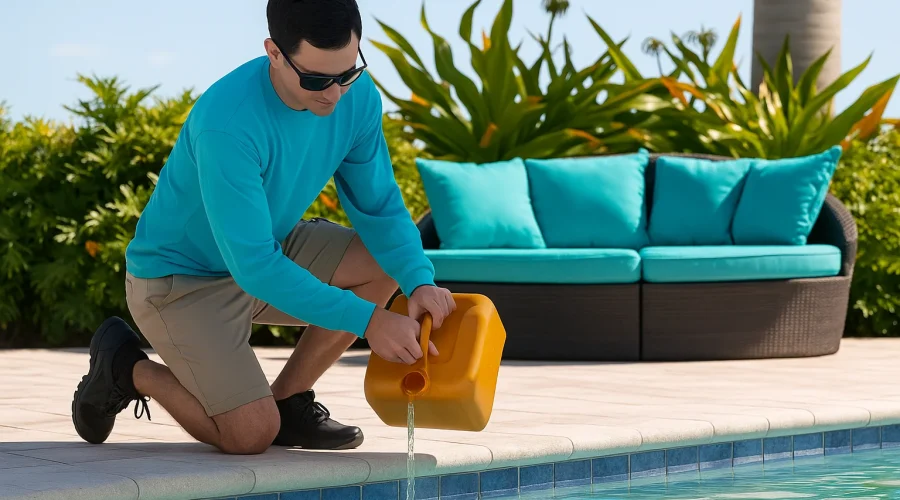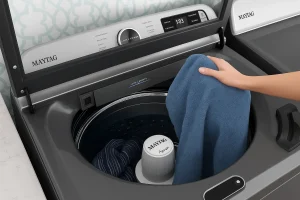When I first started maintaining my pool, I often wondered, what is liquid chlorine and how is it different from other types of chlorine. Simply put, chlorine liquid is a clear, strong-smelling solution used commonly for disinfecting water, especially in pools.
Many people ask, is chlorine a liquid, and the answer lies in its form and use. Is chlorine a solid liquid or gas? At room conditions, it’s naturally a gas, but it’s compressed and cooled into a liquid for easier handling and storage.
One of the most practical uses of chlorine I’ve seen is in keeping water safe and clean. For example, chlorine liquid pool treatments are among the fastest ways to sanitize large volumes of water.
In household cleaning too, liquid chlorine bleach is a trusted disinfectant. Scientifically speaking, if you’re wondering, is chlorine a solid liquid or gas at room temperature, the answer is gas, but its liquid state is created artificially for better control. This conversion helps us use it efficiently, whether in pools or home sanitation.
Why I Chose Liquid Chlorine for Pool Maintenance
When I first started maintaining my backyard pool, I struggled to find the right solution that kept the water crystal clear and free of bacteria. Eventually, I turned to liquid chlorine, and it truly changed my approach. One of the biggest advantages of using liquid chlorine in pool care is how fast it works.
Unlike tablets or powders, liquid pool chlorine dissolves immediately, meaning you don’t have to wait long to enjoy clean, safe water. It’s also easy to measure and apply, which helped me avoid common mistakes I made with other products.
Another reason I recommend chlorine liquid for pool cleaning is its ability to tackle tough contaminants quickly. Whether it’s after a big pool party or a rainy day, liquid chlorine pool treatment restores balance fast.
As someone who values convenience, I found that buying pool chlorine liquid in bulk is cost-effective and ideal for regular maintenance. The uses of chlorine in water disinfection are well-known, but swimming pool liquid chlorine stands out for its reliability and ease. Over time, I realized liquid chlorine for pool use isn’t just effective, it’s smart pool care simplified.
The Importance of Regular Chlorine Use in Summer
Reliable Chlorine Liquid Solutions for Pool Owners
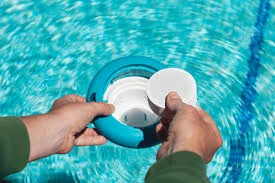
From years of maintaining both residential and commercial pools, I’ve found chlorine liquid to be one of the most effective and fast-acting sanitizers. What sets pool chlorine liquid apart is how quickly it dissolves and begins working, keeping water crystal clear and safe for swimmers.
Many pool owners, especially those with larger pools, prefer the convenience of 1 gallon sodium hypochlorite containers, as they offer a good balance of ease and efficiency in regular treatment routines. Whether you’re a new pool owner or someone looking to upgrade your cleaning routine, the best liquid chlorine for pool use is one that’s strong, dependable, and easy to store.
I often suggest getting sodium hypochlorite from trusted suppliers. This way, you can be sure of its purity and strength. Especially during peak summer months, using chlorine liquid for pools regularly is not just a routine, it’s a necessity to avoid algae growth and waterborne issues.
Applications and Importance of Liquid Chlorine
-
Liquid chlorine is a powerful cleaning and disinfecting agent used across various industries.
-
Chlorine is naturally a gas at room temperature.
-
It becomes liquid when cooled and compressed under controlled conditions.
-
In pool care, chlorine is commonly used in liquid form as sodium hypochlorite.
-
Many people confuse chlorine’s forms, it’s available as gas, liquid, and solid (e.g., tablets).
-
A chlorine stabilizer liquid helps extend the effectiveness of liquid chlorine in sunlight.
-
Liquid chlorine ensures fast, even disinfection in pool water.
-
It plays a vital role in both industrial sanitation and residential pool maintenance.
-
Proper storage and handling are essential due to its reactive nature.
-
Its formation process and versatility make it a key component in water treatment.
A Closer Look at How Chlorine is Formed
During my early days working with water treatment systems, one question always stood out, how is chlorine formed? Understanding this gave me a clearer picture of its role in sanitation and industrial use. Chlorine is not found free in nature due to its high reactivity.
Instead, it is produced through a process called electrolysis, where electricity is passed through a saltwater solution, typically brine. This process separates sodium and chloride ions, releasing chlorine gas, which is then cooled and compressed to form chlorine liquid.
People often ask, is chlorine a solid liquid or gas? The truth is, chlorine exists in all three states depending on the conditions. In everyday use, especially in water purification, we mostly use chlorine liquid, which is easy to store and handle compared to its gaseous form. Working hands-on with chlorine liquid, I learned how critical its careful handling is due to its reactive nature and strong disinfecting power.
Physical Characteristics of Liquid Chlorine
Working in pool maintenance for years, I’ve seen firsthand how sodium hypochlorite behaves under different conditions. Many people ask, is chlorine a liquid? Actually, chlorine is a gas at room temperature, but it’s turned into a liquid under pressure for easier handling and storage. It’s a pale yellow fluid with a strong smell that’s hard to forget once you’ve dealt with it.
An important thing to know is that sodium hypochlorite freezes at around -101°F. So, in cold climates, storing it improperly can cause solidification. If you’re wondering, does liquid chlorine raise pH, the answer is yes, it slightly increases the pH of water, which can affect overall water balance.
That’s why checking liquid chlorine pH levels regularly is a must. If you’re handling it, always read the sodium hypochlorite SDS for safety steps. And if you’ve ever asked, How Is Chlorine Formed?, it’s typically made by passing electricity through saltwater in a process called electrolysis, which separates chlorine gas from sodium.
Is Liquid Chlorine Safe to Use?
From my experience maintaining pools for years, I’ve learned that sodium hypochlorite safety is one of the first concerns new users ask. The truth is, it’s safe when used properly, but certain precautions are non-negotiable. Always read the sodium hypochlorite SDS before handling.
It explains how to deal with spills and skin contact, which is crucial if you’re new to working with strong chemicals. One mistake I’ve seen often is not storing it correctly, the unopened sodium hypochlorite shelf life can reduce dramatically if left in hot or sunny places. Ideally, keep it in a cool, dark area to ensure it remains effective for up to six months.
Learn More
Another important thing to remember is how long does sodium hypochlorite last once opened. I noticed it weakens over time, usually within a few weeks. So, always date the container when first opened. And here’s a common question people ask me: how long after adding sodium hypochlorite can you swim? My general rule is to wait at least four hours with proper circulation. If the chlorine level is still too high, it can irritate your skin and eyes, especially for kids.
Choosing the Right Chlorine Product for Cleaning

I have been in the pool maintenance business many years, and know very intimately the applications of chlorine in both large-scale industries and small neighborhood homes. Sodium hypochlorite is useful as many factories treat their water as well as in the maintenance of their equipment and even in food processing due to the high disinfecting ability.
Use of sodium hypochlorite bleach as a laundry detergent and a cleaner on the surface of things is common at home since it removes stains and kills germs. The question on my ears is whether sodium hypochlorite is the same as bleach.
Buy Now
Personally, although they are closely connected, they work around a bit in terms of concentration. They also inquire about chlorine tablets and liquid and normally I recommend the tablets as a convenient pool option but they tend to disperse slower than sodium hypochlorite as a liquid.
Interestingly, the topic sodium hypochlorite vs bleach is at the forefront when choosing cleaning agents, particularly, in the matter of strength, and in the matter of storage. Speaking of another aspect, with special environments, chlorine dioxide liquid is a cheaper, safer and friendlier alternative of chlorine being increasingly popular in food industries and hospitals alike.
Benefits of Liquid Chlorine for Pool Sanitization
A Smarter Way to Keep Your Pool Clean
When I first began taking care of my swimming pool, I felt lost by the options for keeping the water clean. I found that sodium hypochlorite is the best and easiest choice for pools over time. Using pool chlorine liquid is not only fast-acting but also ensures immediate results without the residue left by other forms of chlorine. This made liquid pool chlorine my go-to for crystal-clear water, especially during heavy use in summer.
In my experience, sodium hypochlorite is great for pool owners who want simplicity and reliability. Whether you’re topping up after a swim or doing routine treatment, pool liquid chlorine dissolves instantly and distributes evenly, saving both time and effort. I always keep liquid chlorine pools stocked, especially because it supports reliable Water Purification, keeping harmful bacteria at bay while making the pool safe and inviting for everyone.
Laundry Disinfection with Chlorine Bleach
At home I have learned to have a good use of the sodium hypochlorite bleach. It is a powerful cleaner that is an alkaline solution with sodium hypochlorite which is perfect in cleaning surfaces such as kitchen countertop, bathrooms and floors. It is also excellent when properly diluted to wash clothes, especially whites, to clean the soiling and kill germs. The safe and effective use of it depends on the following labels.
As a food safety professional I have witnessed the necessity of food-grade sodium hypochlorite in produce wash and sanitizing equipment. Properly used, it eliminates bad microorganisms without yielding residues of substance. Concentration and timely storage provide both health and food safety as well as freshness.
The Role of Liquid Chlorine in Modern Medical Care
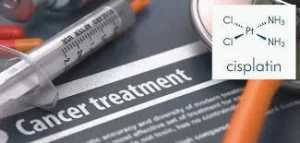
In my early research on water treatment for rural clinics, I saw how chlorine helped. It not only disinfected water but also created sterile environments. Chlorine in medicine is more than just sanitation. Many don’t realize this. It plays a hidden yet vital role in the synthesis of countless drugs and treatments. From antiseptics to anesthetics, chlorine is often an unseen backbone.
Even in chlorine in pharmaceuticals, its influence is remarkable. I remember seeing a chart that listed how many drugs use chlorine compounds. These compounds are key for their function. It’s fascinating how one simple element is crucial in Medical Care.
It plays a key role in developing antibiotics and cancer treatments. This real-world experience taught me that while we often praise advanced technology in hospitals, something as basic as chlorine remains a quiet hero behind the scenes.
The Role of Chlorine in Advanced Technology
Working in the Advanced Technology Sector has shown me how vital chlorine in tech truly is. In my experience at semiconductor manufacturing plants, chlorine is crucial. It helps keep equipment clean and precise. This is especially true during etching, where tiny particles can lead to failures.
I’ve watched engineers rely on sodium hypochlorite to create ultra-pure materials that support the intricate layers in microchips. On the renewable side, chlorine for solar panels is a game changer. I remember during one project, our team used chlorine-based cleaning solutions to prepare the silicon surfaces of solar cells, boosting their efficiency.
The way chlorine interacts with these surfaces shows its powerful role in pushing green energy forward. It’s clear that whether in microelectronics or clean energy, chlorine continues to shape the cutting edge of the Advanced Technology Sector.
How Liquid Chlorine Works in Daily Pool Maintenance
Being a frequent pool owner, I find myself answering this query all the time when people enquire; is liquid chorine equal to shock? It is a good question because they are similar in appearance but have a somewhat different functionality.
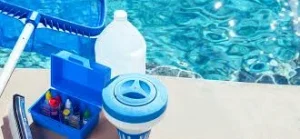
A strong dose of chlorine in the form of liquid is a shocking process of your pool. This assists in eliminating bacteria and clearing of murky water within a short time. Majority of the chlorine being used is normal sodium hypochlorite to maintain the constant level of chlorine daily.
Generally speaking,sodium hypochlorite shocking your pool is effective to shock the pool when the water is green or smelly. However, it is rather important that one knows how to shock the pool with sodium hypochlorite. With the help of a sodium hypochlorite shock calculator determine the correct amount.
There are also basic rules according to the size of your pool. Chlorine exists under the forms of shock and sodium hypochlorite. They are used in different ways and weaknesses.Sodium hypochlorite shock is effective and fast-acting. It just rocks when it comes to a rush clean up. Balance is maintained using Daily sodium hypochlorite.
The comparison between cal hypo vs sodium hypochlorite is also made by people, and I have used both of them. Cal hypo is effective, though it is able to add calcium into the water, and this is not suitable to all the pools. In many instances then, shock pool with liquid chlorine is safer and more convenient. In any case, the difference between sodium hypochlorite and shock will make you manage your pool more intelligently.
Importance of Packaging in Liquid Chlorine Handling
In my experience handling bulk sodium hypochlorite for industrial applications, I’ve seen how critical the right packaging and transport methods are for safety and efficiency. Whether you’re managing sodium hypochlorite delivery to a municipal water plant or distributing to smaller clients, the process begins with safe packaging chlorine in high-quality containers.
Buy Now
These containers are often part of bigger sodium hypochlorite tanks. They can also be smaller units, based on volume and use. What often gets overlooked is the role of sodium hypochlorite storage tanks in maintaining the product’s stability during distribution. These are not just holding units but vital parts of the supply chain.
Choose a sodium hypochlorite tank that meets safety rules and works well for your needs. This helps prevent leaks and contamination. Large facilities using sodium hypochlorite tanks need a ready fleet for quick and safe deliveries.
Importance of Proper Chlorine Packaging
From my years in water treatment, I know how important chlorine packaging is. It plays a key role in the safety and stability of sodium hypochlorite. It’s not only about sealing a container. It’s also about ensuring the sodium hypochlorite tank can withstand pressure, temperature changes, and long trips during shipping.
I remember a time when a bulk delivery went smoothly. The tank’s reliability really helped on that rough transport route. Today, many facilities use an automatic sodium hypochlorite feeder. It makes things easier and more accurate. It connects seamlessly with storage units, helping regulate flow without human error packaging matters.
It affects how the feeder works, keeps the chlorine safe, and ensures the system runs smoothly. For more insights from everyday users, you can check this discussion on first-time liquid chlorine use.
Technological Advancements in Chlorine Manufacturing Plants

From my firsthand experience visiting several chlorine manufacturing plants, the process behind sodium hypochlorite production is both complex and fascinating. These facilities use advanced technology to ensure purity and safety at every step.
One thing that stood out to me was how streamlined and energy-efficient modern plants have become. At the heart of this process is the electrolysis of saltwater, which produces chlorine gas that is then cooled and compressed into sodium hypochlorite. The plant’s design focuses heavily on safety due to chlorine’s reactive nature.
Interestingly, the liquid chlorine market has pushed manufacturers to innovate even further. Global demand has led to larger and more automated systems, making today’s liquid chlorine production much faster and more reliable than in the past. These improvements meet rising demand and set new standards in chlorine manufacturing.
■ AGC Inc. (Japan):
When I first learned about AGC Inc. The company expertly balances safety, purity, and efficiency in making liquid chlorine. As someone who has worked closely with industrial-grade chemicals, I can say that AGC Japan chlorine stands out in the market for its consistency and reliability.
Their chlorine is widely used in water treatment, pharmaceuticals, and manufacturing processes, thanks to a rigorous quality control system developed over years of chemical innovation. The company not only delivers high-performance chemical solutions but also ensures environmental standards are maintained. My experience visiting one of their facilities in Japan showed how deeply committed they are to sustainability and advanced technology.
■ P.T. Asahimas Chemical (Indonesia):
I’ve worked with many chemical distributors in Southeast Asia. I noticed their commitment to quality and consistency during my visit to the Cilegon factory. There, they handled liquid chlorine with great care, following global safety standards.
Asahimas Chemical liquid chlorine is known for its purity. What makes it special is the company’s production model. This model keeps the supply steady, even when there are disruptions. This offers water treatment plants and industrial cleaners a strong solution. It cuts down on operational risks. Their location in Indonesia helps speed up delivery in the Asia Pacific. This makes them a trusted name among industry peers.
■ AGC VINYTHAI PLC. (Thailand):
I’ve worked with many suppliers, but AGC VINYTHAI stands out in the chlorine industry. They made a strong impact, especially in Southeast Asia. When I first went to their facility in Thailand, I was impressed. The way they handled AGC VINYTHAI chlorine showed great precision and safety. It really went beyond what I expected. They make liquid chlorine efficiently and care for the environment. This aspect is often ignored in the industry.
AGC VINYTHAI’s chlorine supply is reliable. This is especially true for water treatment and disinfection industries. Clients often ask for AGC VINYTHAI chlorine. They appreciate its purity and consistency. If you’re working in a field where quality control matters, then sourcing liquid chlorine from AGC VINYTHAI PLC. Thailand can save you from a lot of hassle later. Their global reputation is built not just on capacity but on years of technical trust.
Conclusion:
Liquid chlorine is a powerful disinfectant. It’s used in many places, such as homes, swimming pools, and industrial water treatment. It’s also important in advanced manufacturing. Its fast action, simple use, and strong sanitizing power make it a top choice for water safety and hygiene.
Chlorine exists as a gas, but manufacturers compress it into a liquid for easier storage and use. This makes it more practical for both home and business applications. Liquid chlorine is a safe and effective way to fight harmful microbes. When stored correctly, it helps keep water clear and meets sanitation standards.
Liquid chlorine is not just for everyday use. It is vital in the food, medical, and technology industries. It helps with many tasks. It disinfects food-processing areas and aids in making life-saving drugs and high-precision electronics.
Top manufacturers like AGC Inc., P.T. Asahimas Chemical, and AGC VINYTHAI PLC. lead the global liquid chlorine market. They focus on safety, quality, and caring for the environment. Liquid chlorine plays a vital role in sanitation and industry. It combines effectiveness with practical use. Browse a wide selection of liquid chlorine products available online.
FAQs
What is liquid chlorine used for?
Liquid chlorine is used for disinfecting surfaces, whitening clothes, and purifying water. It’s also used in industrial sanitation and medical sterilization.
What is the formula for liquid chlorine?
The chemical formula is Cl₂, representing two chlorine atoms bonded together. It’s a highly reactive oxidizing agent.
Is chlorine gas Cl or Cl₂?
Chlorine gas is Cl₂, not Cl. It exists as diatomic molecules and is made via the chlor-alkali process.
What is another name for sodium hypochlorite?
Sodium hypochlorite (NaOCl) is often called "liquid chlorine" or bleach. It’s made by dissolving chlorine gas in a sodium hydroxide solution.
What is liquid chlorine used for?
Liquid chlorine is used for disinfecting surfaces, whitening clothes, and purifying water. It’s also used in industrial sanitation and medical sterilization.
What is the formula for liquid chlorine?
The chemical formula is Cl₂, representing two chlorine atoms bonded together. It’s a highly reactive oxidizing agent.
Is chlorine gas Cl or Cl₂?
Chlorine gas is Cl₂, not Cl. It exists as diatomic molecules and is made via the chlor-alkali process.
What is another name for sodium hypochlorite?
Sodium hypochlorite (NaOCl) is often called "liquid chlorine" or bleach. It’s made by dissolving chlorine gas in a sodium hydroxide solution.
